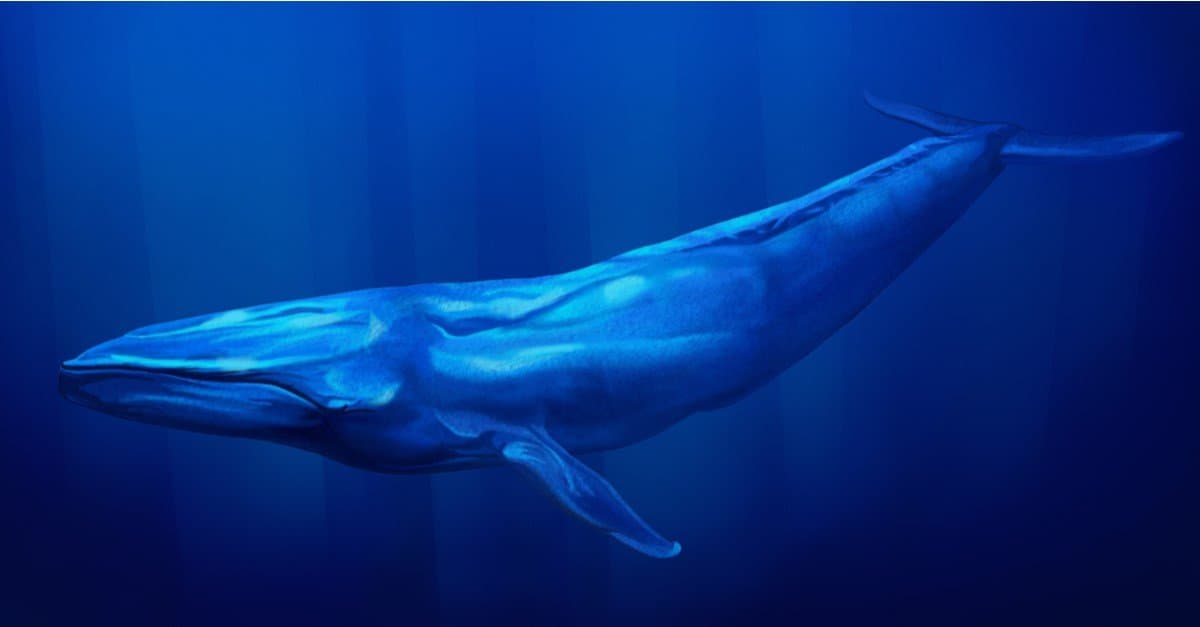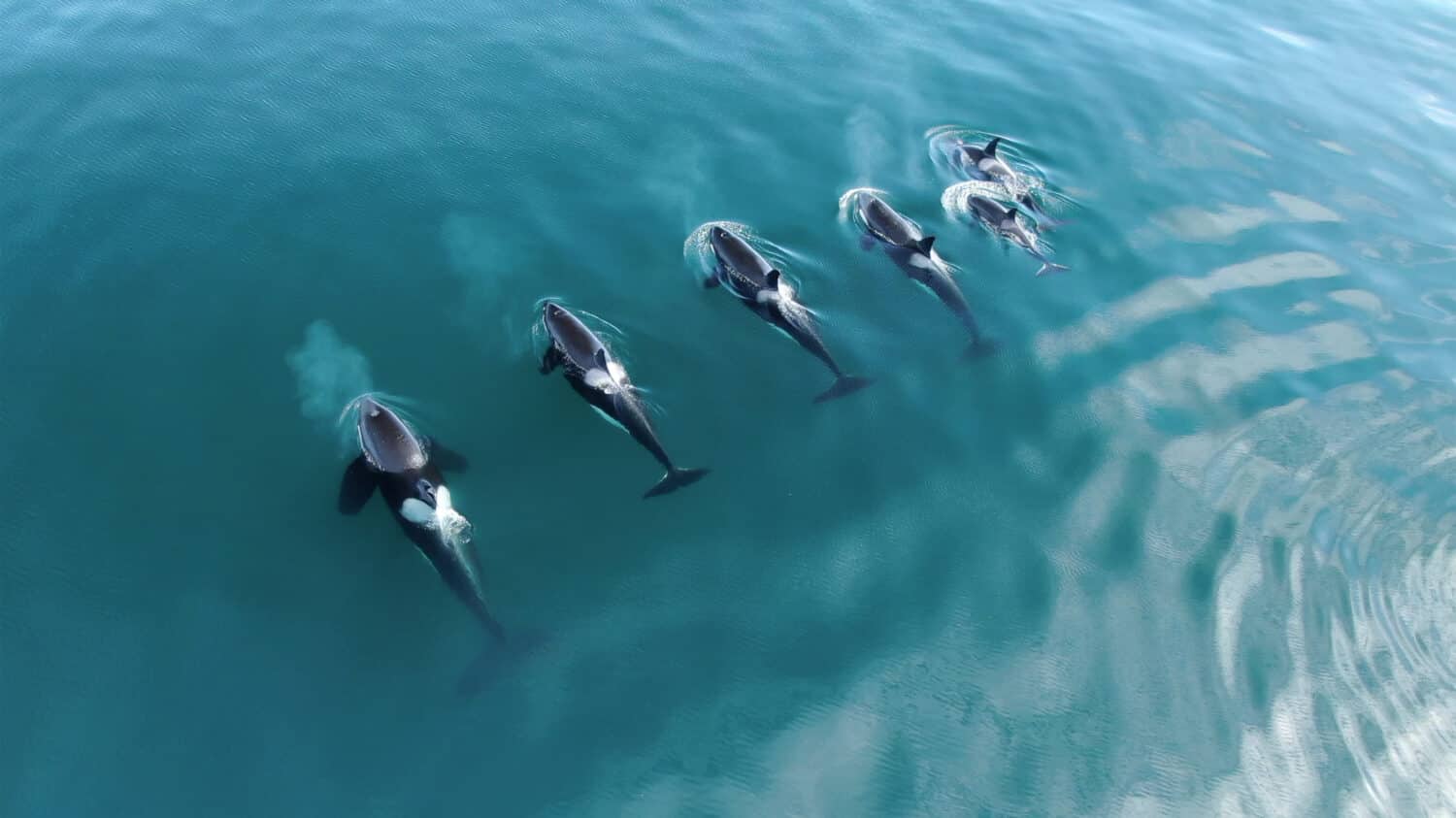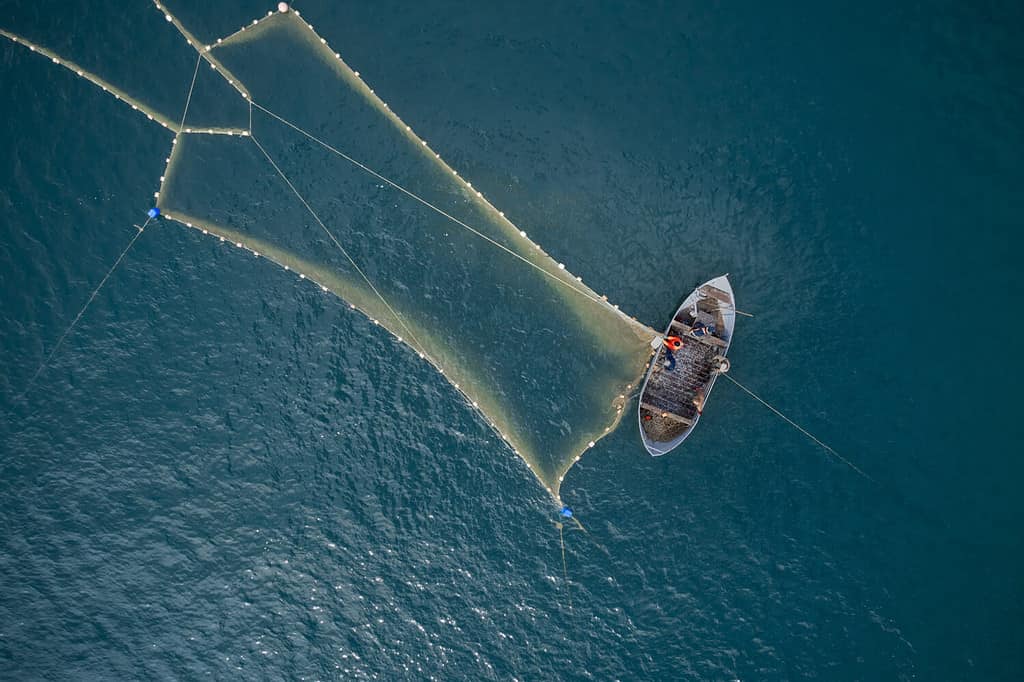If you have had the opportunity to witness a whale breach the ocean’s surface, you know just how breathtaking it is. Brute strength and seemingly impossible grace combine together perfectly to propel the whale’s massive body out of the water. This behavior is known as cresting or breaching. Half breaching is when part of a whale’s body is visible, while full breaching exposes the entire body or most of it.
Besides surface breaching, cetacean surfacing behavior includes lobtailing, also known as tail slapping or tail breaching. It happens when only their tail and lower body come out of the water. Whales, dolphins, and porpoises commonly display this behavior. Though it is a sight to see, you might be wondering why. Let’s dive into the awe-inspiring world of whales to uncover the reasons behind this fascinating behavior.

Whales can perform a 360-degree spin or a non-spinning breach, landing on their back or side. Alternatively, a chin-slap breach incorporates a vertical leap with a throat or underbelly landing position.
©Tatiana Ivkovich/Shutterstock.com
Reason 1: Necessity

While
blue whales
— the largest animal on Earth — can go without air for 90 minutes, they usually resurface after 30.
©Atomic Roderick/Shutterstock.com
Whales breach a few times per hour, with most making trips to the surface anywhere from 3 to 15 minutes apart. Humpback whales (Megaptera novaeangliae) can stay underwater for 60 minutes, while sperm whales (Physeter macrocephalus) can stay under for about 90. Scientists hypothesize whales breach as a way to load up on oxygen before diving back down into the ocean. The numerous accounts of whales breaching after being deep below the surface provide evidence to support their hypothesis. A possible explanation for this is myoglobin, a protein found in whales’ blood cells that works to carry oxygen. The physical activity involved with breaching might lead to greater levels of myoglobin. This helps them acquire more oxygen and thus fuel deeper, longer dives.
Another possible reason for breaching is to help aid digestion. During peak feeding seasons, humpback whales, for example, can eat up to 20,000 pounds of fish in one day. Similar to humans taking a walk after a heavy meal, breaching helps move food faster through the whale’s digestive system.
Reason 2: Communication and Camaraderie

Most whale species, such as orcas (
Orcinus orca), are highly social and live in matrifocal pods. These familial groups often revolve around a mother figure.
©Willyam Bradberry/Shutterstock.com
Whales are highly social creatures that travel in pods, familial groups that whales often stick with for life. According to the National Ocean Service, whales hear ultrasonically and infrasonically, depending on their species. Similar to echolocation, clicks help whales map out their physical location and allow them to navigate more efficiently. To communicate within and between pods, whales utilize whistles and pulsed calls. Though advantageous, vocalizations are not the only way whales have figured out how to communicate with each other.
After researching and examining 94 whale pods, The Society for Marine Mammalogy concluded the most basic explanation for breaching is as simple as communication. The evidence verifies that whales use breaching as a way to talk to and share information with one another. The study confirmed whales use breaching to communicate within their pods and with whales located hundreds or even thousands of miles away! Whales are also seen breaching when pods first come together or split apart — possibly as a way to say hello and goodbye!
Humpback whales and sperm whales are the most prolific breachers of all the cetacean species. This behavior is also observed in other baleen whales, such as blue, minke, gray, sei, and fin whales. Using their pectorals (flippers), flukes (tails), and peduncles (the area between the dorsal fin and the flukes), they expertly propel themselves out of the water. This allows them to send messages to their pod members, sometimes even to those over 4,000 miles away! Since sound waves travel faster in water than they do through the air, the goal of whales that are far from their pods is to create as big of a splash as possible. The bigger they are, the farther the sound waves can travel, explaining why whales sometimes breach multiple times in a row. These messages can show faraway pod members they are safe, warn of danger, or even establish dominance.
Reason 3: Mating and Courting

Male whales, primarily humpbacks, use breaching as part of their mating ritual to attract the attention of desirable females.
©Tomas Kotouc/Shutterstock.com
Also called bulls, male whales actually breach more times during the mating season than they do during peak feeding times. Surprisingly, some whales do not even eat during the breeding season. Instead, they choose to dedicate their time and energy to attracting a prime female to mate with. How might an 80,000-pound creature catch the attention of a promising female? By breaching, of course! This courting behavior allows males to show off their power while also asserting dominance over other males in the vicinity.
Reason 4: Play and Exercise

Female whales teach their young how to breach. This crucial lesson helps them play, exercise, and socialize throughout their life.
©iStock.com/inusuke
While it is true that breaching is sometimes necessary, there is an even simpler explanation as to why whales breach. Jumping out of the water is just pure fun for them! Whales are highly intelligent and extremely social, which means they love to play by themselves and with each other. Since whale pods are regularly spotted breaching together, experts believe it to be a sign of socialization and play.
Female whales mainly breach when they are with their young, suggesting they do it simply as a way to teach their young how. This early lesson is critical for the survival and safety of their calves, as baby whales repetitively breach when they stray too far from their mothers — or vice versa. Additionally, whale calves breach more frequently than their older companions. This could also be because they have an excess of energy, and their mothers want them to tire themselves out.
Reason 5: Hunting and Intimidation

Made primarily of keratin, baleen plates help baleen whales filter, sift, sieve, and trap prey inside their mouths.
©John Tunney/Shutterstock.com
Whales have incredibly diverse diets, with some favorites including krill, shrimp, fish, and squid. Though baleen whales make use of filter feeding to capture small morsels of food, other whale species must hunt to catch their dinner. In this case, breaching can be a helpful tool to ensure success. Due to their colossal size, breaching causes a shockwave that confuses, intimidates, and stuns schools of fish. This makes catching them much easier and significantly less exhaustive for the whale. Known to hunt large prey, orcas launch themselves completely out of the water — sometimes even as a collective group — to create the biggest, loudest shockwave possible.
Reason 6: Escaping Predators

Whales are often accidentally caught in large fishing nets.
©OlegRi/Shutterstock.com
Orca whales, more accurately coined killer whales, are apex predators. This means they have no predators and are naturally at the top of their food chain. Technically part of the dolphin family, this species hunts and preys on humpback, blue, minke, and beaked whales. In this case, breaching is performed by both parties. Orcas breach to stun and capture their prey, while the hunted whales breach to escape or injure predators.
Transient killer whales are one of the only marine predators of whales, but humans are still the biggest threat to whale species. Fishing gear is responsible for the capture and deaths of over 300,000 cetaceans each year. Whale breaching sightings around popular fishing spots have led marine scientists to believe whales breach to try and intimidate predators (in this case, humans). Again, they also do this to communicate with other whales nearby about the possible threat.
Reason 7: Removing Parasites and External Irritants

A single humpback whale can carry over 990 pounds of barnacles at a time, which embeds itself into the whale over time, causing patches of roughened, calcified skin called callosities.
©Mogens Trolle/Shutterstock.com
Living in the ocean exposes whales to a plethora of parasites and uncomfortable external growths. Unlike humans, whales do not have the convenience of fingers to easily remove particulates that are stuck to them. Instead, they make use of the powerful appendages they do have: their flippers and tails. By breaching, the sudden rush and force of the water helps them remove any external irritants from their mouth and skin, such as barnacles, parasites, or dead skin.
Tubicinella is one of the most prevalent types of barnacles to grow on whales. It is tall and boasts ridges that help prevent the whale’s skin from rejecting it. On the other hand, there are host-specific species of barnacle, such as Cryptolepas rhachianecti, more commonly known as gray whale barnacles. Even though barnacles can provide protection from predators, an overgrowth of them can lead to unnecessary drag or energy loss for the whale. To prevent the barnacles from accumulating too much or growing too large, frequent breaching is necessary.
Barnacles also provide the perfect nesting ground for parasites. Whale lice, for example, are another problem breaching helps resolve. This external parasite lives on the surface of whales and other marine life, often making homes in skin lesions, genital folds, and other easily accessible orifices. They feed on algae stuck to the surface of their skin or, worse, the host’s tissue and fluid secretions. The massive force involved with breaching helps remove these parasites, preventing infections and other adverse health effects.
Reason 8: Environmental Factors

Fin whales, finback whales, or common rorquals (
Balaenoptera physalus) are the second largest whale species on Earth and rarely ever breach.
©iStock.com/ANDREYGUDKOV
Between 2012 and 2020, fin whale breaching sightings were collected and analyzed. While many other large whale species breach regularly, this behavior is noted significantly less in fin whales, with a record of a mere 27 times across 721 sightings (3.74%). Considerations were taken with respect to season, chlorophyll concentration, sea state, pod size, the closest whales, and maritime traffic. Their findings alluded to the seasons — or rather, water temperature — being one of the greatest factors impacting how frequently fin whales breach. Found most predominantly in the Mediterranean Sea, fin whales perform seasonal dispersal movements throughout this basin. During the study, breaching was recorded with a higher frequency during the summer and fall (>4.96%), followed by spring (1.77%). No breaching was observed during the winter months. This shows that the temperature of the water greatly impacts how active whales are and, in turn, how frequently they will breach.
Summary of the 8 Reasons Why Whales Breach Themselves
| Rank | Reason |
|---|---|
| #1 | Necessity |
| #2 | Communication and Camaraderie |
| #3 | Mating and Courting |
| #4 | Play and Exercise |
| #5 | Hunting and Intimidation |
| #6 | Escaping Predators |
| #7 | Removing Parasites and External Irritants |
| #8 | Environmental Factors |
The photo featured at the top of this post is © Christian Vinces/Shutterstock.com
Thank you for reading! Have some feedback for us? Contact the AZ Animals editorial team.






